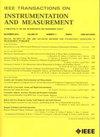基于神经网络的防漂移气体检测算法
IF 5.6
2区 工程技术
Q1 ENGINEERING, ELECTRICAL & ELECTRONIC
IEEE Transactions on Instrumentation and Measurement
Pub Date : 2024-11-07
DOI:10.1109/TIM.2024.3488159
引用次数: 0
摘要
最近,由于长期气体检测是电子鼻(E-Nose)应用的一个关键因素,因此备受关注。然而,传感器的漂移效应会大大降低传感器的性能。因此,在这项工作中,我们提出了一种新的漂移补偿方法,通过优化特征选择、模型构建和训练方法,研究基于卷积神经网络(CNN)方法的抗漂移气体检测。首先,利用注意力机制筛选气体数据的特定特征,去除低权重特征。此外,还设计了一个多尺度特征提取网络,将三层卷积融合后的特征作为最终分类特征输入,在保持漂移不变的情况下提取深度特征。同时,采用分段训练法和目标循环训练模型,以减少所需的实验数据。重要的是,基于目前最大的气体漂移数据集,所提出的方法在三年内保持了超过 80% 的平均气体检测准确率,有效提高了气体检测的长期稳定性。因此,我们的研究结果为解决传感器漂移效应提供了一种有效的方法。本文章由计算机程序翻译,如有差异,请以英文原文为准。
Anti-Drift Gas Detection Algorithm Based on Neural Network
Recently, long-term gas detection has attracted much attention due to its being a key factor for electronic nose (E-Nose) applications. However, the sensor drift effect can significantly reduce the performance of the sensor. Therefore, in this work, we proposed a new drift compensation method by optimizing feature selection, model construction, and training methods to study drift-resistant gas detection based on convolutional neural network (CNN) methods. First, the attention mechanism is used to screen the specific features of the gas data and remove the low-weight features. Moreover, a multiscale feature extraction network is designed so that the features fused by the three-layer convolution are used as the final classification feature input to extract the depth features keeping the drift unchanged. Simultaneously, the segmented training method and the targeted cyclic training model are adopted to reduce the required experimental data. Importantly, based on the largest gas drift dataset currently, the proposed method maintains the average gas detection accuracy beyond 80% in three years, and the long-term stability of gas detection is effectively improved. Therefore, our findings provide an effective way to solve the sensor drift effect.
求助全文
通过发布文献求助,成功后即可免费获取论文全文。
去求助
来源期刊

IEEE Transactions on Instrumentation and Measurement
工程技术-工程:电子与电气
CiteScore
9.00
自引率
23.20%
发文量
1294
审稿时长
3.9 months
期刊介绍:
Papers are sought that address innovative solutions to the development and use of electrical and electronic instruments and equipment to measure, monitor and/or record physical phenomena for the purpose of advancing measurement science, methods, functionality and applications. The scope of these papers may encompass: (1) theory, methodology, and practice of measurement; (2) design, development and evaluation of instrumentation and measurement systems and components used in generating, acquiring, conditioning and processing signals; (3) analysis, representation, display, and preservation of the information obtained from a set of measurements; and (4) scientific and technical support to establishment and maintenance of technical standards in the field of Instrumentation and Measurement.
 求助内容:
求助内容: 应助结果提醒方式:
应助结果提醒方式:


